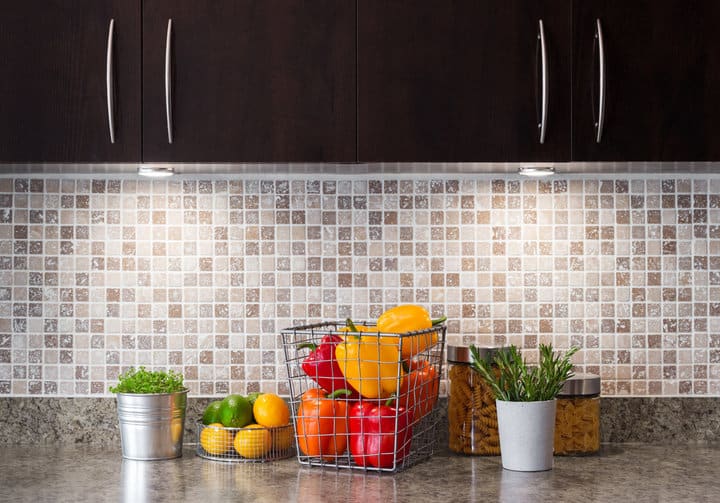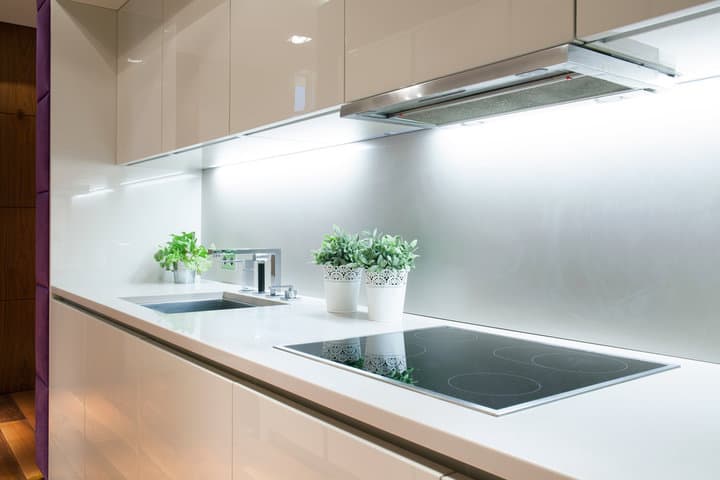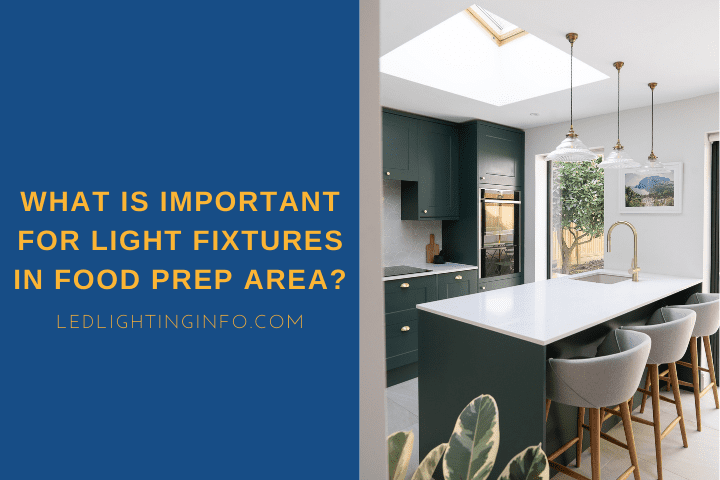When renovating your kitchen at home, there are many things you’ll need to consider.
It’s not just about choosing a nice set of cabinets and appliances. Still, there are a lot of seemingly smaller decisions to make too that can have just as big an impact.
One of those is the lighting you’re going to use.
There are many options for lighting your new kitchen, but it’s not just as simple as choosing what looks nice.
A kitchen is an area where you’ll be using tools and utensils that can be dangerous, so you need to be able to clearly see what you’re doing.
Using weak lighting when dealing with sharp knives is a recipe for disaster.
There are no hard regulations on kitchen lighting. You should ensure a lighting level of 70-80 foot candles for any areas where you’ll be working with tools. A general brightness of 30-40 foot candles for the rest of the room is considered normal.
There’s a bit to unpack here, so let’s take a look at:
- What you need to bear in mind for kitchen lighting
- Whether LED lights can affect your food
- Commercial kitchen lighting regulations
Things To Keep In Mind When Designing Home Kitchen Lighting

When planning your kitchen lights, you need to think about the different layers of lighting.
The two main layers are ambient lighting and task lighting.
The names are pretty self-explanatory – you’ve got ambient lighting for the whole room and task lighting for where you’ll carry out certain tasks.
Ambient Lighting – Foot Candles/Lux Explained
The main lights will provide your ambient lighting, and you’ve various options available.
You might choose traditional pendant lights – the number of which would depend on the size of your kitchen – while a lot of contemporary kitchens use spotlights instead.
To work out how much lighting you need, start with the size of the room. You need the area, so multiply the width by the length.
You can measure in feet or meters, but it will impact whether you use foot candles or lux.
It’s recommended that you have between 30-40 foot candles (320 to 430 lux) for the ambient lighting in your kitchen.
Multiply the area of your room by the relevant lighting measurement, which will tell you how many lumens you need across your bulbs.
To quickly explain – foot candles are the measurement of lumens per square foot.
It tells you how light a surface is.
Lux is similar, but it’s the metric equivalent – lumens per meter.
So if you’ve measured in feet and a kitchen that’s 192 square feet, multiply that by 30 and by 40 separately to get the lumen range you should aim for – between 5760 and 7680 lumens.
And as a metric example, say your room is 12 square meters, multiply that by 320 and 430 to get a lumen range of 3840 and 5160.
That’s the total lumens you need for your ambient lighting. So you can then decide what type of lights you would prefer and then work out how many lumens a typical bulb for that fixture will provide.
If you choose pendant lights, and you want to use 1500 lumen bulbs, you’ll need 3 for the smaller kitchen example above, or 4 lights for the larger one.
Task Lighting

Once you’ve worked out your ambient lighting, you’ll need to consider task lighting.
This is the foot-candle or lux measurement for your surfaces where you’ll prepare food, and it should be higher – 70-80 foot candles, or 750-850 lux.
Now your main lights might achieve some of this because the surface of your units will be higher and closer to the bulbs.
But then, if you’re facing a kitchen work surface, you’ll likely cast a shadow onto it, reducing the effective lighting.
So you’ve got two options:
- Make sure your main lights are positioned in a way that casts direct light onto a work surface – much easier if using spotlights
- Add extra lighting specifically for task lighting
This section option is generally preferred since it means you get optimum lighting for the area at all times.
So, consider adding lights on the underside of wall-mounted cabinets to ensure the surface is appropriately illuminated.
Again, work out the area of where you’ll be working, and multiply that by the foot candles or lux to work out how many lumens you’ll need.
Then position your task lighting where it is sure to provide that amount of light on that surface.
Accent Lighting
There is a third layer of lighting you may wish to consider, which is accent lighting. This isn’t essential to the day-to-day use of the kitchen but is purely a design feature.
You may choose under-cabinet lighting for floor-level cabinets or shelf lighting.
There are no main considerations here in terms of lighting level, except for making sure you choose the right strength of light for the ambiance.
You don’t want accent lighting to overpower your ambient lighting, but you want it to be visible.
Can LED Lights Affect Food In Any Way?

It might seem like an unusual question, but it’s definitely worth clarifying – are there any effects on food if you use LED lighting, either positive or negative?
In a regular kitchen setting, the answer is no. LED lights don’t negatively or positively impact the food you’re preparing, no matter how close they are.
You can safely store a fruit bowl underneath your wall-mounted kitchen cupboards if you have under-cabinet lighting.
It’s where you may have food that has long and close-proximity exposure to LED lights that you may notice a positive impact – or rather, a lack of a negative impact.
LED lights run cool – they don’t produce anywhere near the heat levels that incandescent, halogen, or fluorescent lights do.
Where food used to be displayed underneath these older lights – such as in a supermarket – could have a detrimental effect, causing it to ripen too quickly or wither faster.
It’s also worth pointing out the efficiency improvements of LED lights in refrigerators.
Older refrigerators used incandescent bulbs, but it wouldn’t have impacted your food since the fridge’s cooling tech would’ve maintained the cold atmosphere needed.
But the fridge would have had to work harder to do so.
So not only do LED bulbs use less electricity, but they mean that your fridge does too – only marginally, compared to its overall use, but it all helps.
But as for your main kitchen lights? LEDs have a lot of energy-efficient benefits but no bearing on your food in either a positive or detrimental way.
Commercial Kitchen Lights Regulations

There are more formal regulations for anyone who wants to open a restaurant.
The Occupational Safety and Health Administration (OSHA) department of the US government stipulates that food preparation areas must have a minimum lux of 500 (around 46-foot candles).
Still, cooking areas should be a minimum of 1000 lux (approximately 93-foot candles).
Also, all kitchen lighting needs to be sealed to prevent broken bulbs from contaminating food. They must be waterproof to an IP67 rating or better.
Of course, if you’re opening a restaurant, remember that these are minimum requirements.
If you can achieve a higher lux measurement for food preparation areas, you will make it safer for your chefs.
Final Words
Whether you’re a serious foodie or occasionally make a simple dinner for the family, it’s still important to get your kitchen lighting right.
Barring the garage, it’s probably the home area where you’ll use the most dangerous items, and you want to be able to see what you’re doing when cutting with a sharp blade.
Do you prefer pendant lights or spotlights in your kitchen? And is it single lights or strip lights under your cabinets?
Looking for an LED bulb but not sure what type you need?
Check out my free bulb picker and select the right bulb within few clicks.

